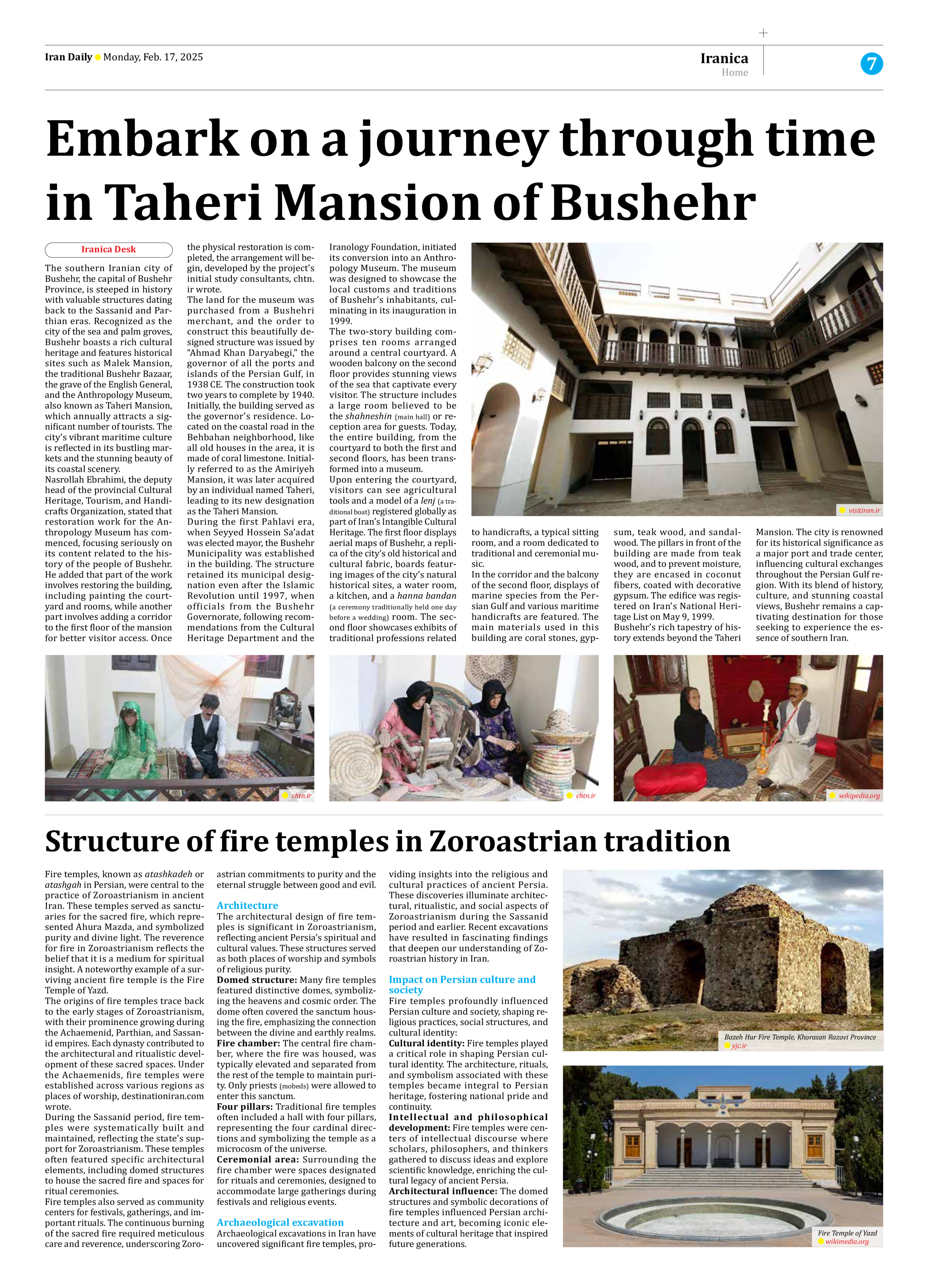
Structure of fire temples in Zoroastrian tradition
Fire temples, known as atashkadeh or atashgah in Persian, were central to the practice of Zoroastrianism in ancient Iran. These temples served as sanctuaries for the sacred fire, which represented Ahura Mazda, and symbolized purity and divine light. The reverence for fire in Zoroastrianism reflects the belief that it is a medium for spiritual insight. A noteworthy example of a surviving ancient fire temple is the Fire Temple of Yazd.
The origins of fire temples trace back to the early stages of Zoroastrianism, with their prominence growing during the Achaemenid, Parthian, and Sassanid empires. Each dynasty contributed to the architectural and ritualistic development of these sacred spaces. Under the Achaemenids, fire temples were established across various regions as places of worship, destinationiran.com wrote.
During the Sassanid period, fire temples were systematically built and maintained, reflecting the state’s support for Zoroastrianism. These temples often featured specific architectural elements, including domed structures to house the sacred fire and spaces for ritual ceremonies.
Fire temples also served as community centers for festivals, gatherings, and important rituals. The continuous burning of the sacred fire required meticulous care and reverence, underscoring Zoroastrian commitments to purity and the eternal struggle between good and evil.
Architecture
The architectural design of fire temples is significant in Zoroastrianism, reflecting ancient Persia’s spiritual and cultural values. These structures served as both places of worship and symbols of religious purity.
Domed structure: Many fire temples featured distinctive domes, symbolizing the heavens and cosmic order. The dome often covered the sanctum housing the fire, emphasizing the connection between the divine and earthly realms.
Fire chamber: The central fire chamber, where the fire was housed, was typically elevated and separated from the rest of the temple to maintain purity. Only priests (mobeds) were allowed to enter this sanctum.
Four pillars: Traditional fire temples often included a hall with four pillars, representing the four cardinal directions and symbolizing the temple as a microcosm of the universe.
Ceremonial area: Surrounding the fire chamber were spaces designated for rituals and ceremonies, designed to accommodate large gatherings during festivals and religious events.
Archaeological excavation
Archaeological excavations in Iran have uncovered significant fire temples, providing insights into the religious and cultural practices of ancient Persia. These discoveries illuminate architectural, ritualistic, and social aspects of Zoroastrianism during the Sassanid period and earlier. Recent excavations have resulted in fascinating findings that deepen our understanding of Zoroastrian history in Iran.
Impact on Persian culture and society
Fire temples profoundly influenced Persian culture and society, shaping religious practices, social structures, and cultural identity:
Cultural identity: Fire temples played a critical role in shaping Persian cultural identity. The architecture, rituals, and symbolism associated with these temples became integral to Persian heritage, fostering national pride and continuity.
Intellectual and philosophical
development: Fire temples were centers of intellectual discourse where scholars, philosophers, and thinkers gathered to discuss ideas and explore scientific knowledge, enriching the cultural legacy of ancient Persia.
Architectural influence: The domed structures and symbolic decorations of fire temples influenced Persian architecture and art, becoming iconic elements of cultural heritage that inspired future generations.







